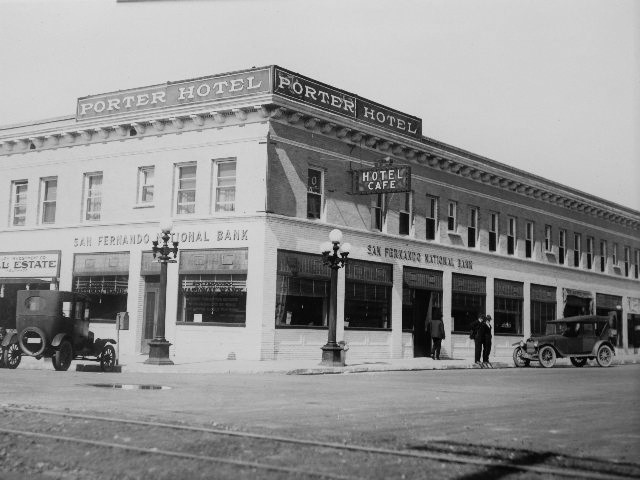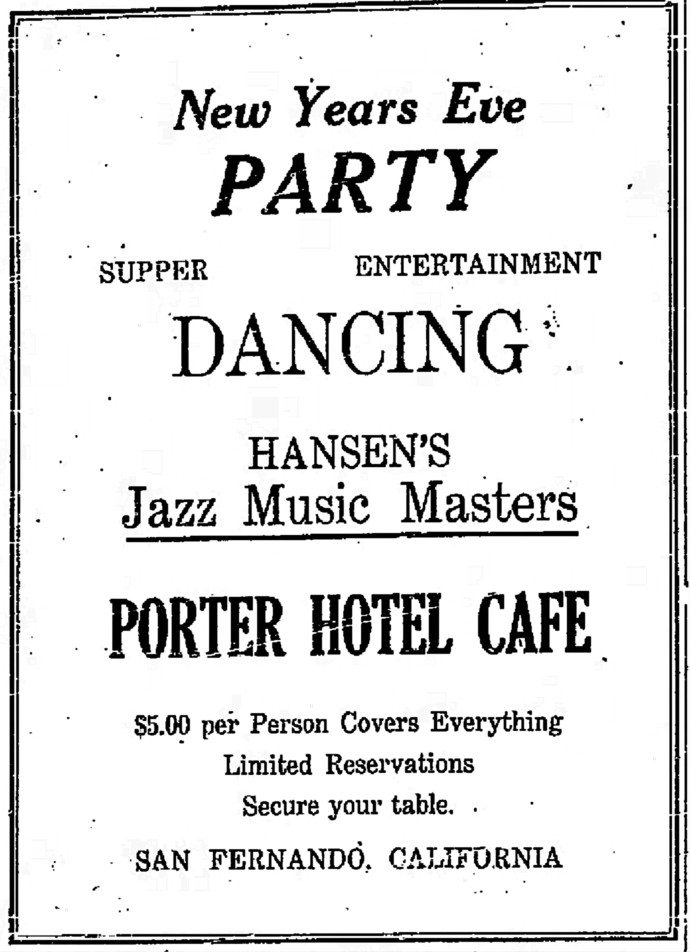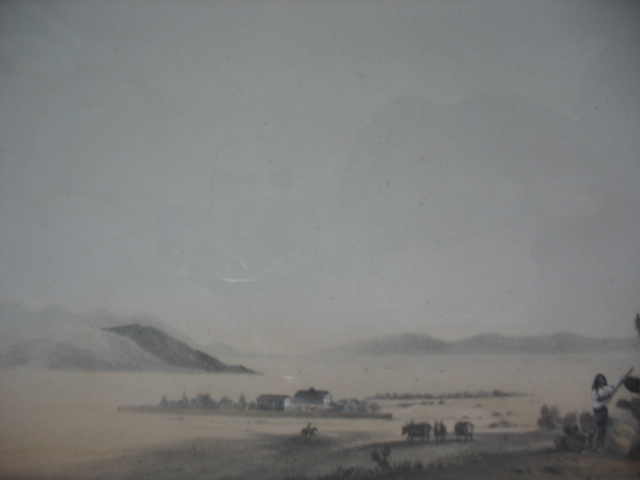A very cool ca. 1940s photo showing San Fernando Road at night was unearthed today from a box in a storage room housing artifacts associated with Lopez Adobe.
Among other elements, the image shows the two-story Porter Hotel building at the corner of San Fernando Road and Brand Boulevard and there is an interesting history associated with this century-old structure. This was the second hotel to have that name in the area, as B. F. Porter’s Porter Land and Water Company built what was also called the “Mission Hotel” or “Boom Hotel” back in the 1880s. This was the structure that briefly housed the George Junior Republic school for troubled boys covered in the last post on this blog.
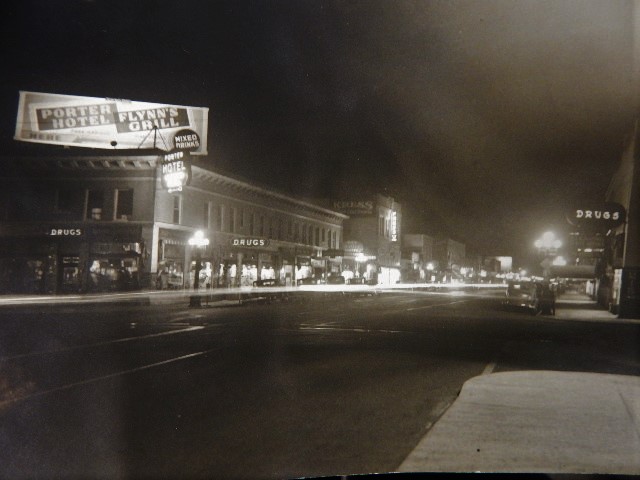
A beautiful view of San Fernando at night, ca. 1930s, including, at left, the Porter Hotel, which operated for fifty years from 1913 to 1964. From the Lopez Adobe Collection.
The building was completed in 1913 as a regional population and construction boom was underway and it contained stores, a bank, and the Porter Cafe on the ground floor and the hotel on the second level.
For many years, the property was controlled by the Flynn Estate, led by J. Leo Flynn and his brothers. Note that, atop the building is a sign for the Flynn’s Grill, a business run by the family along with the hotel.
The Porter Hotel structure was the go-to location for meetings, dinners, parties and other events for service clubs, community groups, political fundraisers (usually for Republicans supported by Flynn) and others. Among its retail tenants were furniture stores, drug stores (including Thrifty’s) and others.
After a half-century, however, the building was suddenly the scene of a devastating fire that erupted on 21 July 1964. The blaze seemed to have been the product of faulty wiring in the attic of the wood-frame building. There were sixty-three occupants of the hotel, which was probably residential, who were forced to flee the structure and the hotel portion was completely gutted. Meantime, the ground floor stores also suffered water and smoke damage, including Lee’s Furniture and Thrifty Drug.
For a time, Flynn contemplated razing the building and constructing something new, in keeping with his prominent role in promoting a reconfigured downtown that led, during this period, to the San Fernando Mall concept. Like counterparts throughout the United States and locally in such places as Pomona, the outdoor mall was an attempt to remake aging downtowns.
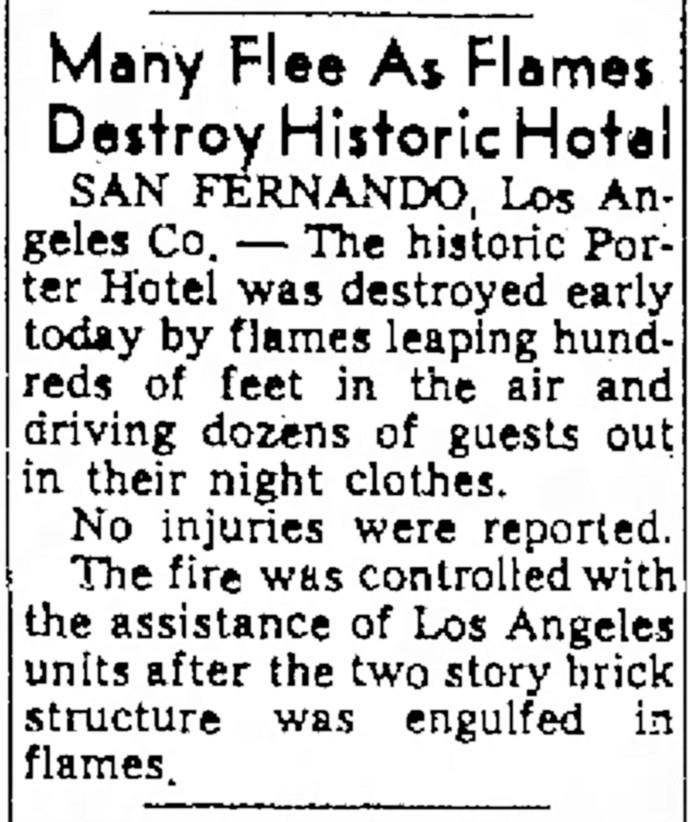
A short article from the Fresno Bee-Republican, 21 July 1964, covering the fire that gutted the Porter Hotel.
Yet, when prominent Los Angeles architectural firm, A.C. Martin and Associates, was brought in to consult on what to do with the building, the company recommended a renovation keeping the basic frame of the structure while using a modern, aluminum-ribbed fascia as well as complete remodeling of the interior.
The result was what locals called “The Phoenix,” a building that rose from the ashes of the 1964 conflagration. The building had survived its greatest threat after 51 years of existence and, exactly 51 years after the fire, the structure still stands today.
As for James Leo Flynn, he was born in 1897 at the base of Chavez Ravine to Irish immigrant parents. His father, Henry, was a machinist and his mother Leo and his five siblings, including four brothers and a sister. The family moved to San Fernando in 1901, where Henry Flynn opened a butcher shop. Three doors down from the Flynn home in the 1910 census was Ramona Lopez Shaug, daughter of Geronimo and Catalina Lopez, and her family.
Flynn attended Morningside School, San Fernando High School and the University of California campuses at Berkeley and Davis.
For a time, he assisted his father in raising cattle and operating the meat market. When he registered for the draft during World War I, Flynn was working for the San Fernando Mercantile Company and, two years later, in the 1920 census, he was the foreman at a local dairy. Married in the early 1920s, it was sometime during that decade that Flynn became manager of the Porter Hotel and it appears that he acquired the building in the early years of the Great Depression. Eventually, he and his brothers comprised the Flynn Estate, the official entity that owned the building.
Flynn became a noted civic leader, serving on the San Fernando city council from 1932 to 1935 and then held the position of mayor from 1935 to 1940. Active in the Republican Party, he was a member of the county central committee, was party chairman for the local Assembly district, and was a delegate to the party’s 1948 national convention.
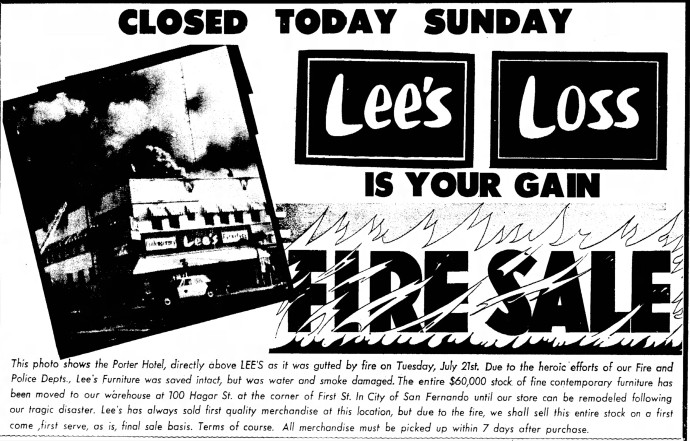
The Valley News of 2 August 1964 featured this ad for a “fire sale” from Lee’s Furniture, a tenant of the burned-out Porter Hotel.
A longtime stalwart of the local chapter of the Kiwanis Club and its 1941 president, he was also active in Boy Scouts, the American Red Cross and the Community Chest. A Roman Catholic, Flynn was active with Holy Cross Hospital in Mission Hills. He was the board chairperson for the San Fernando branch of the San Fernando Valley Federal Savings and Loan Association, and president of the city’s chamber of commerce. He was chair of the team that led the Downtown Shopping Center project and of the Economic Development Committee, which spearheaded the creation of the San Fernando Mall project.
In 1967, Flynn retired from the savings and loan, having also overseen the disposal of the Flynn Estate’s holdings, including the Porter Hotel building, after the death of his brothers who were involved in the business with him. At a dinner honoring the man they called “Mr. San Fernando,” Flynn was honored with the Fernando Award, bestowed on the person, as reported in the Valley News edition of 10 December 1967, who “has done the most for the [San Fernando] Valley as a whole.”
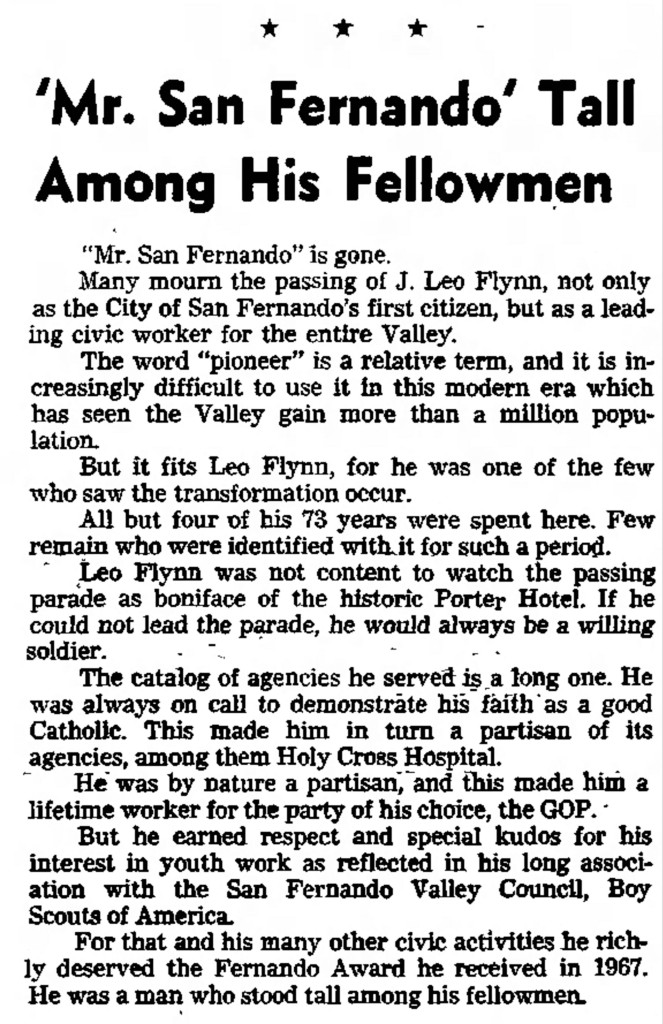
Tribute was paid to J. Leo Flynn, “Mr. San Fernando” in this 18 August 1970 article from the Valley News.
In the 18 August 1970 issue of the Valley News, a tribute to “Mr. San Fernando” was offered, in which Flynn was lauded for his many activities in town as “first citizen” as well as being “a leading civic worker for the entire Valley.” The piece concluded with the observation that J. Leo Flynn “was a man who stood tall among his fellow men.”

